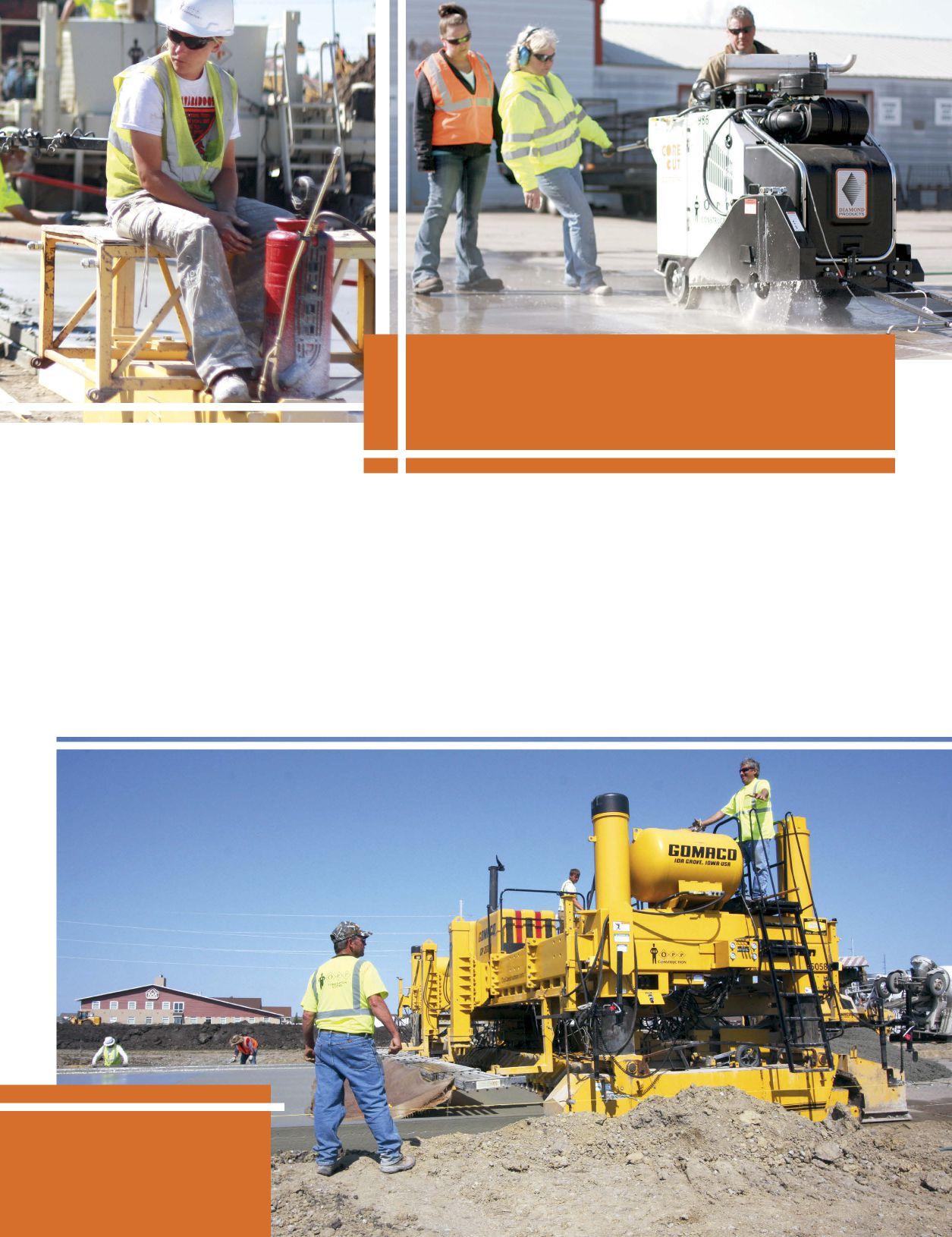
2 minute read
IN DEMAND
BY JENNIFER LU
The number of construction jobs in the U.S. declined by 837,800 between 2004 and 2014, according to the Bureau of Labor Statistics, and though employment figures for the next 10 years are projected to return to near 2004 levels, industry groups such as the National Association of Home Builders and Associated General Contractors report that contractors are having difficulty hiring skilled laborers.
In a June 2016 NAHB survey report, 40 percent or more of NAHB members surveyed said there was “some shortage” in finding carpenters, framing crews, bricklayers, masons and painters, and 10 to 23 percent said there was a “serious shortage” in this type of labor.
Meanwhile, 92 percent of the 272 Midwestern firms surveyed by the AGC expected they would need to hire more hourly craft workers within the next year, and 90 percent of the firms surveyed found it challenging to fill these salaried and hourly positions, according to the 2015 ACG workforce survey results for the Midwest.
“There is a shortage of future construction professionals, but we understand our shortage is not any different (from other sectors)” says Russ Hanson, executive vice president of the AGC of North Dakota. “We know we're not alone in that.”
Some of the hourly positions that firms surveyed by AGC had the most trouble filling included carpenters, concrete workers, bricklayers, cement masons and sheet metal installers. For salaried positions, firms reportedly had the most difficulty finding project managers and supervisors, estimating professionals and engineers.
Misperceptions
Despite projections for growth, not many young people are entering the construction industry.
Just more than 9.9 million people age 16 and over were employed in the construction industry in 2015, according to data from the Bureau of Labor Statistics. Workers 35 to 44 years old made up about 35 percent of the labor force, followed by the next most plentiful age group, workers 45 to 54. Meanwhile, the number of workers age 20 to 24 has stayed constant at about 7 percent for the past four years.
In North Dakota, the number of 19- to 24-yearolds entering the construction industry since 2005 has decreased by 3.3 percent, according to Job Service statistics, while workers age 25 and older increased by more than 100 percent.
Sally Miskavige, vice president of Opp Construction in Grand Forks, attributes some of the reluctance of young people to enter the construction industry to misperceptions that those who enter the profession have failed in some way. In reality, those in construction can make a pretty good living, work outside, work with their hands and make something they’re proud of, she says.
The average annual wage for workers in the construction industry has increased in the past 20 years. Job Service North Dakota reports an average annual wage of $64,899, up 160 percent from 1995. “Really, a lot of these people have really great careers,” Miskavige says. “They’re very happy with their lives. It’s not to be looked down upon.”
Increasing the Labor Pool
To attract future workers, Brenda Elmer, regional director at Associated Builders and Contractors of Minnesota and North Dakota, says the organization makes it a priority to give career presentations to high school students, especially freshmen and sophomores, while they are still “open-minded” to working in construction.
Both ABC and AGC organize career fairs and offer scholarships and programs for students interested in careers in construction. ABC also manages an apprenticeship program that allows ABC-affiliated companies train- ing new employees on the job to increase their apprentices to journeymen status, says Tom Westland, educational director at ABC Minnesota and North Dakota.

Westlund says he’s seen an increase in the number of apprentices and companies taking part in the program in the past year. “We typically will have between 40 and 50 apprentices per year, and now we’re over 60,” he says.
Despite shortages in the labor workforce, Sukhvarsh Jerath, chair of civil engineering at the University of North Dakota in Grand
Forks, says the construction industry is in good shape.
The demand for positions within the industry could change, Jerath says, adding that automation and use of robots in the field likely will increase, but the need for infrastructure remains fundamental to society.
“As long as modern civilization lasts, we are always going to be in demand,” he says.









